Let's Get Deep Into Thin Content
Aug 19, 2024
Written by Casey Bjorkdahl

Casey Bjorkdahl is one of the pioneering thought leaders in the SEO community. In 2010, Casey co-founded Vazoola after working for a Digital Marketing Agency for five years in New York City. Vazoola is now one of the fastest growing and most widely recognized SEO marketing firms in the country.

Let's Get Deep Into Thin Content
A term that often surfaces in SEO campaigns is "thin content." The concept is a major pitfall for many websites as they strive to improve their SEO performance.
What is thin content, and how does it impact your SEO strategy? Keep reading as we take a deep dive into what thin content actually means, we identify its forms, and we clarify common misconceptions about the SEO obstacle.
Key Takeaways:
-
Thin content refers to web pages that provide little to no value to users, often with sparse and uninformative content.
-
Google’s algorithms deprioritize thin content in search results, favoring rich, valuable content that meets user intent.
-
To identify thin content, conduct thorough SEO audits and analyze metrics like bounce rates, time on page, and user engagement.
-
Effective strategies to fix thin content include removing low-value content, optimizing existing content, and merging related articles to create comprehensive resources.
-
Use tools like Google Analytics, Ahrefs Content Explorer, SEMRush, Yoast SEO, and Screaming Frog SEO Spider to audit and improve content.
Table of Contents:
What is Thin Content in SEO?
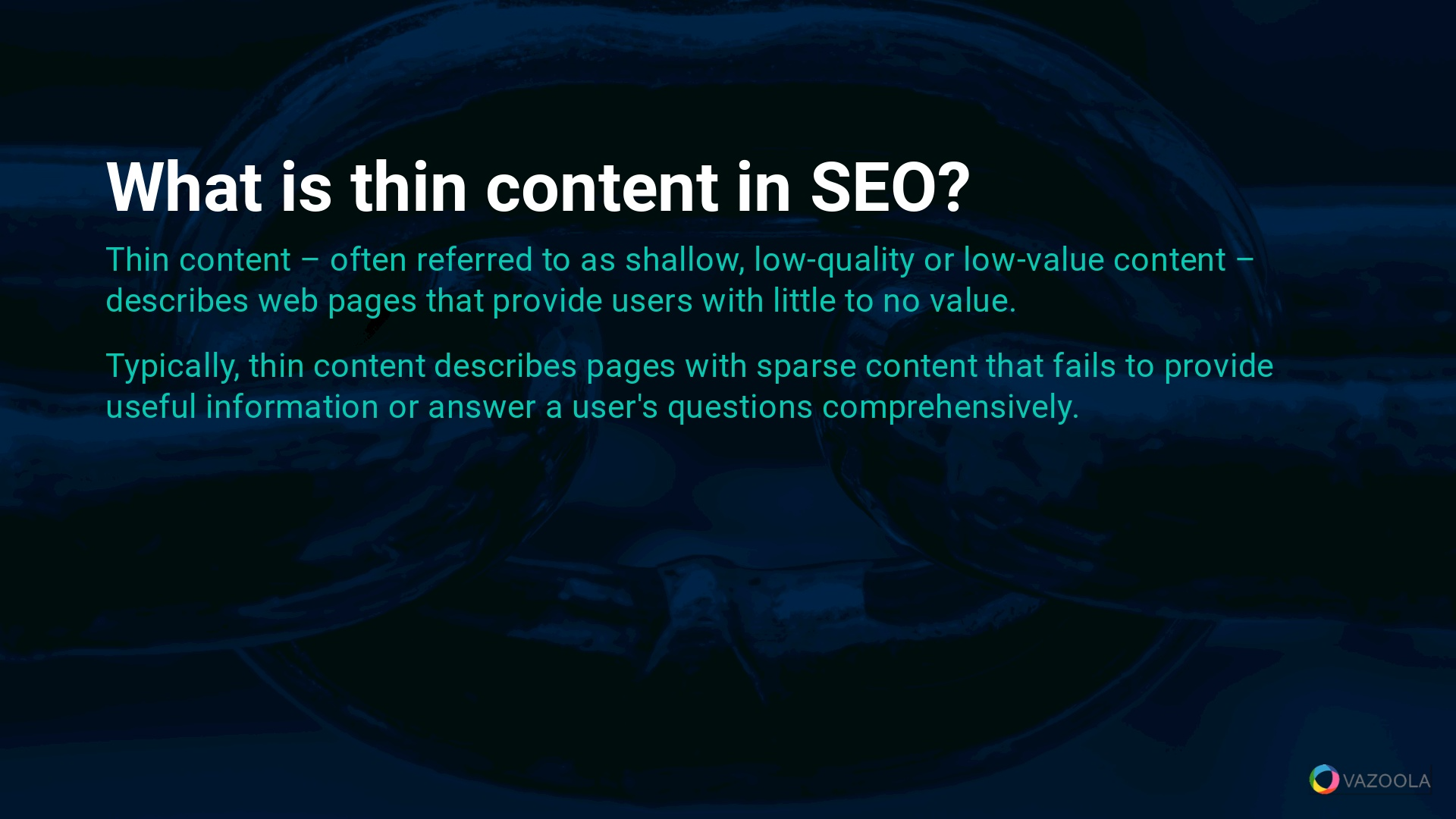
Thin content – often referred to as shallow, low-quality or low-value content – describes web pages that provide users with little to no value. Typically, thin content describes pages with sparse content that fails to provide useful information or answer a user's questions comprehensively.
At Vazoola, we've seen how thin content can negatively impact a website's SEO since search engines like Google prioritize rich, valuable content that serves the user's intent. Thin content is often superficial, overly simplistic, and not helpful to the audience it’s supposed to engage.
Examples of Thin, Shallow, or Low-Value Content
Imagine landing on a gardening website looking for comprehensive care instructions for orchids, but all you find is a 200-word page that vaguely mentions watering and light without any specific details. That would be an example of thin content.
Or consider a tech blog that publishes hundreds of articles about various gadgets. Each article merely summarizes product specifications without any insightful analysis or reviews. This instance also illustrates thin content with pages that offer minimal insight, reflection, or unique information. They essentially leave readers’ questions unanswered.
What Isn't Thin Content?
Thin content has nothing to do with the length of the text. Here at Vazoola, we've crafted detailed guides and brief blog posts, both rich in quality and purpose. A common misconception is equating short content with thin content, since that’s not necessarily true.
Effective SEO content can be concise yet packed with valuable information that fully addresses a user's needs. The depth and relevance of the content are what truly matter, not merely the word count.
Does Google Penalize Thin Content?
How does thin content hurt SEO? What is considered thin content on Google SEO?
There's a pervasive myth that Google directly penalizes websites for thin content.
The truth is, Google doesn’t issue manual penalties specifically for thin content. However, its algorithms – especially the Helpful Content updates of late 2023 – are designed to deprioritize low-quality content in search results.
These algorithmic updates reward content that genuinely assists users. So, it’s crucial that digital marketers focus on creating substantive, useful content.
What's the Ideal SEO Word Count?
We get asked this all the time. All. The. Time.
The truth is, there's no one-size-fits-all answer to the ideal SEO word count. At Vazoola, we recommend focusing on content’s quality and comprehensiveness rather than on hitting a specific word count.
A well-crafted 500-word article can outperform a 2,000-word one – if it more effectively meets the user's search intent and provides genuine value. Always tailor your content to the depth of the subject at hand and the needs of your audience.
Pro Tips:
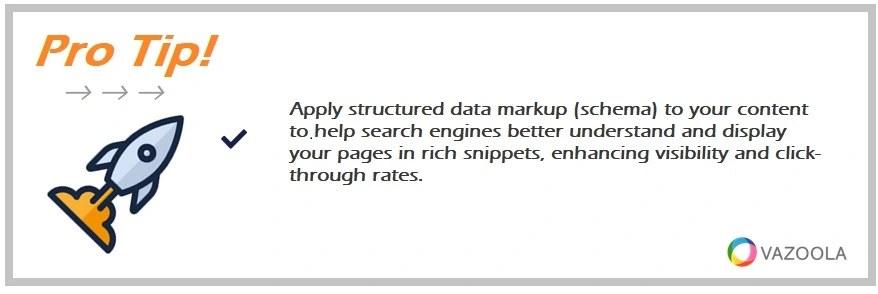
Apply structured data markup (schema) to your content to help search engines better understand and display your pages in rich snippets, enhancing visibility and click-through rates.
Do You Have an SEO Thin Content Issue? Tips and Tools for Auditing Your Content
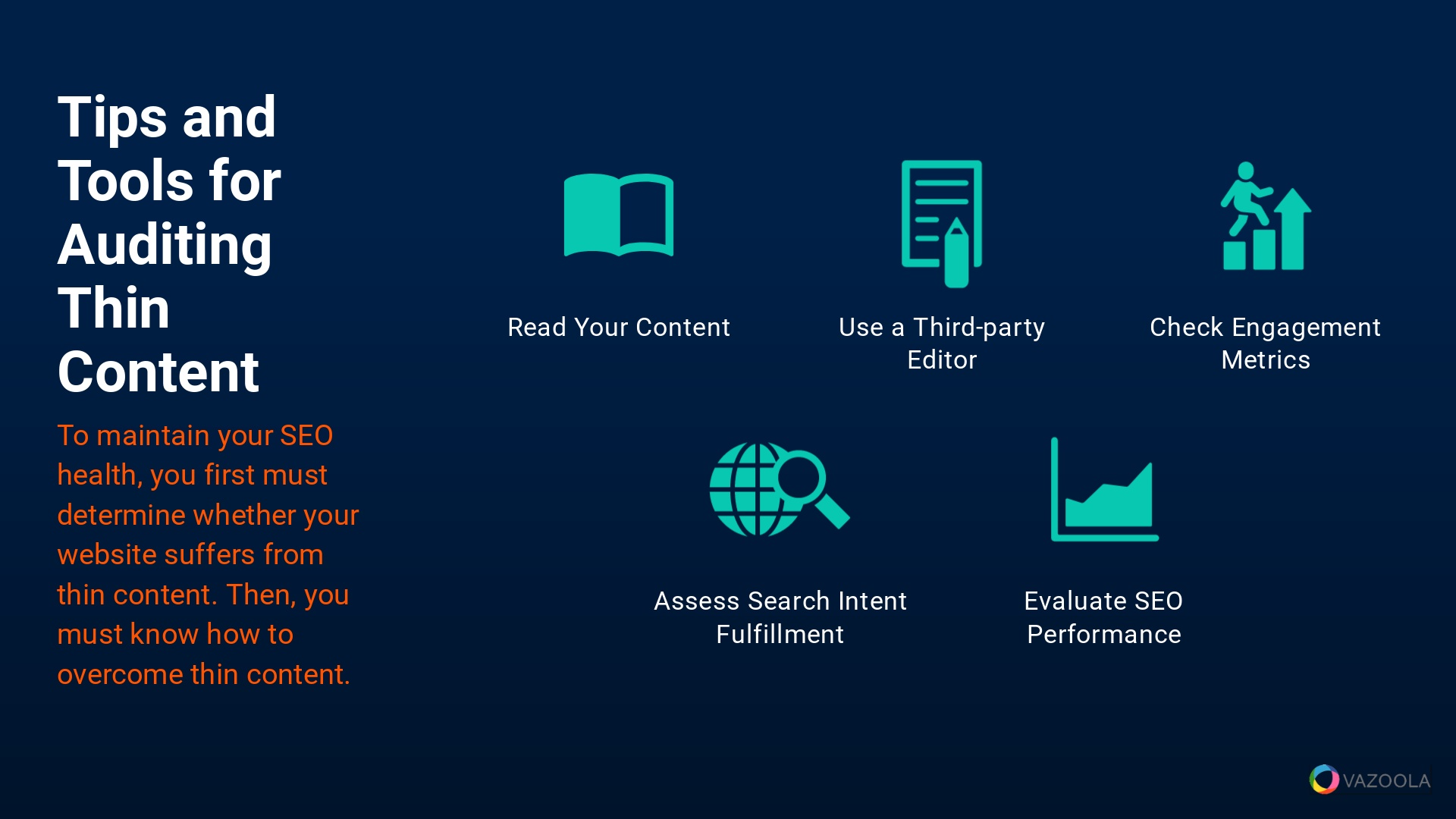
To maintain your SEO health, you first must determine whether your website suffers from thin content. Then, you must know how to overcome thin content.
Here at Vazoola, we often remind our clients to recognize and address thin content. Doing so serves as an essential step toward optimizing your site's performance in search results.
But how do you know if your content is thin? Identifying such issues often starts with a thorough SEO audit existing thin content.
The auditing process highlights areas needing improvement, and it helps refine your overall content strategy.
To effectively audit your content and identify potential thin content, consider the following strategies:
-
Read Your Content: There’s no substitute for personally evaluating your content. Sure, it might be time-consuming, but it’s undoubtedly the best way to gauge quality, relevance, and engagement.
-
Utilize a Third-party Editor: Bring in an objective third party – like a professional editor – to review your content. A professional can provide unbiased insights and recommend necessary enhancements.
-
Check User Engagement Metrics: Analyze user interaction through metrics like bounce rates, time on page, and page views per session. Low engagement often can signal thin content.
-
Assess the Search Intent Fulfillment: Does your content address the queries that lead users to your page? Does it answer their questions thoroughly and satisfactorily?
-
Evaluate SEO Performance: Look at your content’s SEO performance. Evaluate page rankings, organic traffic, and keyword coverage. Poor performance might indicate issues with content depth or quality.
Pro Tips:
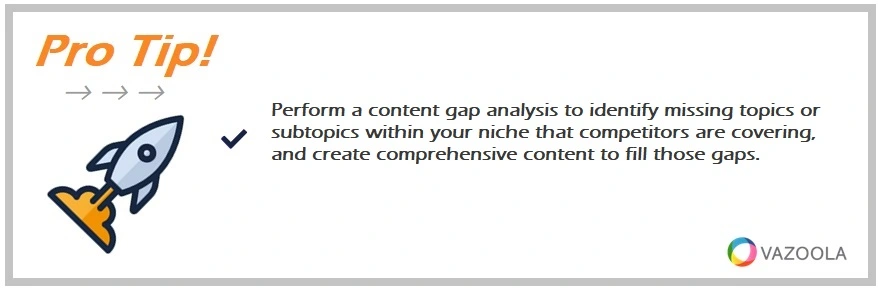
Perform a content gap analysis to identify missing topics or subtopics within your niche that competitors are covering, and create comprehensive content to fill those gaps.
Best Tools for Auditing Your Content
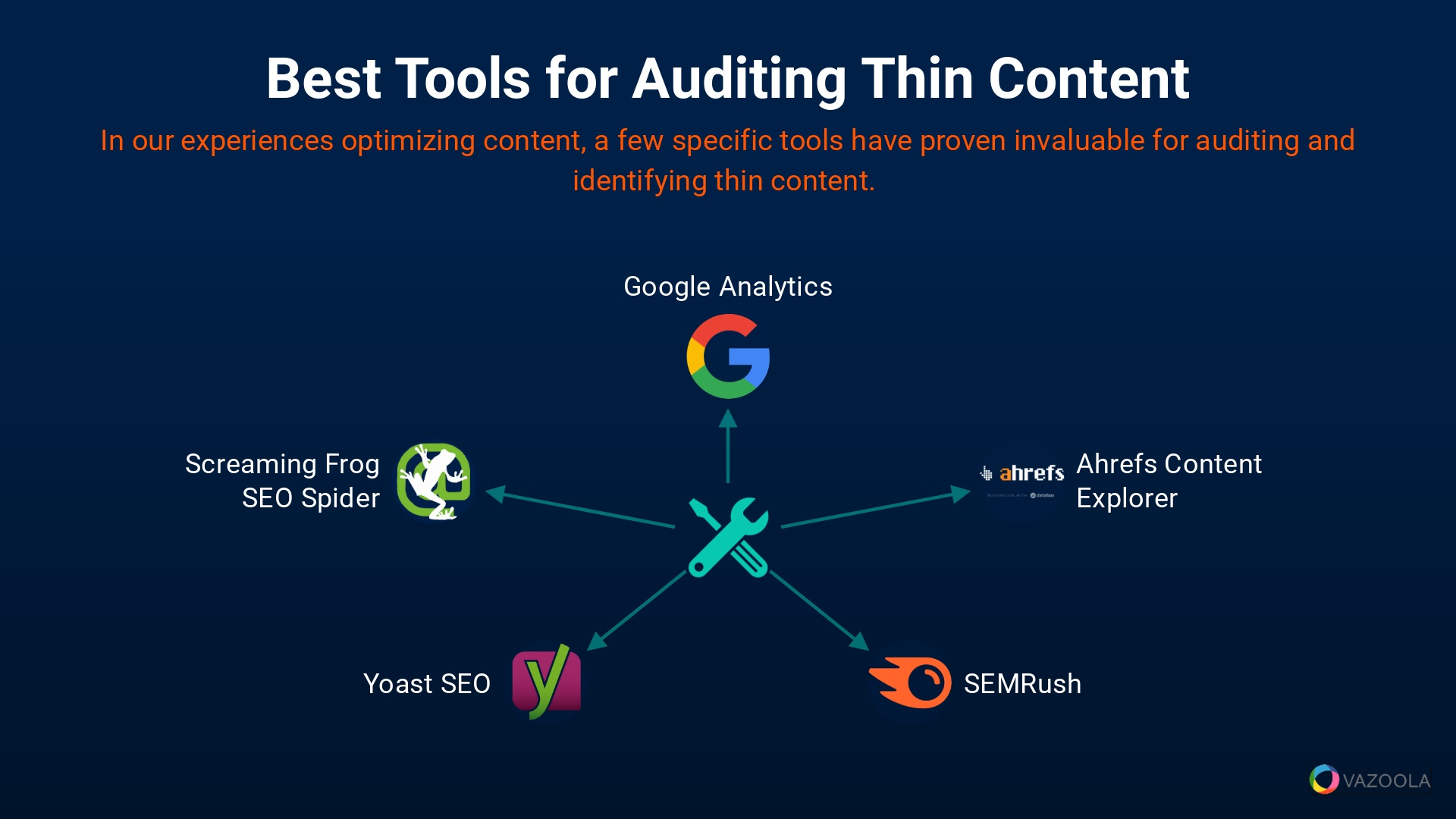
In our experiences optimizing content, a few specific tools have proven invaluable for auditing and identifying thin content.
Here are some of the best tools available, which can help streamline the auditing process and provide deeper insights into your content’s efficacy:
-
Google Analytics: Use this tool to track user engagement and behavior on your site. High bounce rates and low time on page can indicate thin content.
-
Ahrefs Content Explorer: Ahrefs’ tool lets you analyze the top-performing pages in your niche. Compare your content’s performance to that of your competitors.
-
SEMRush: SEMRush offers a comprehensive suite of SEO tools, including content audits that both highlight areas for improvement and track SEO trends.
-
Yoast SEO: Primarily a WordPress plugin that reviews your content for SEO and readability, Yoast provides instant feedback on improvements.
-
Screaming Frog SEO Spider: This tool is useful for crawling your website to find pages that lack depth, indicated by low word counts and poor metadata.
Pro Tips:
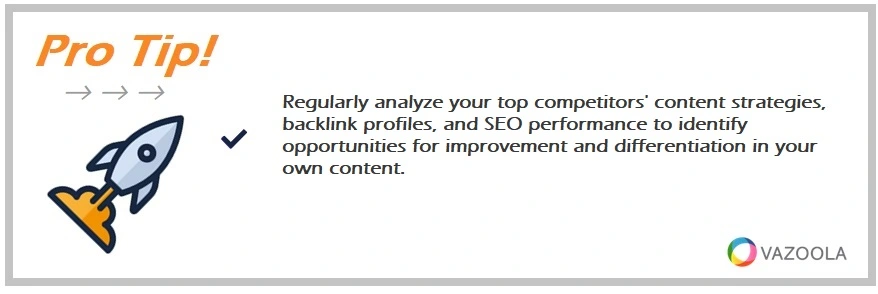
Regularly analyze your top competitors' content strategies, backlink profiles, and SEO performance to identify opportunities for improvement and differentiation in your own content.
Is There a Thin Content Checker Tool?
While there isn't a tool specifically labeled a "thin content checker," many SEO tools provide features that indirectly help identify any SEO thin content issue.
Tools like SEMRush and Ahrefs can help you determine if your content might be considered thin. Take note of these signs by analyzing metrics related to SEO performance and user engagement.
Using these and other tools, you can get a comprehensive view of where your content stands and what steps you need to improve it.
How to Fix Thin Content The Right Way
At Vazoola, we approach thin content issues by focusing on enhancement and optimization rather than just removal.
When you find thin content on your site, it's important you strategically decide whether to purge, optimize, or merge the content and enhance both your site's overall SEO and user experience.
Begin by conducting a thin content purge SEO, removing content that offers little to no value or that which is outdated. Purging the thinnest content helps declutter your site and elevates the overall content quality.
If you discover pages that lack depth but have potential, consider optimizing that existing content. Try enriching the pages with detailed information, updated data, and multimedia elements that increase their value.
Another effective strategy is merging related content. Combine several thin articles on similar topics into one comprehensive resource. This action can reduce redundancy and strengthen your content’s authority.
You also should address duplicate content by ensuring uniqueness and relevance, which can significantly boost your SEO performance.
Pro Tips:
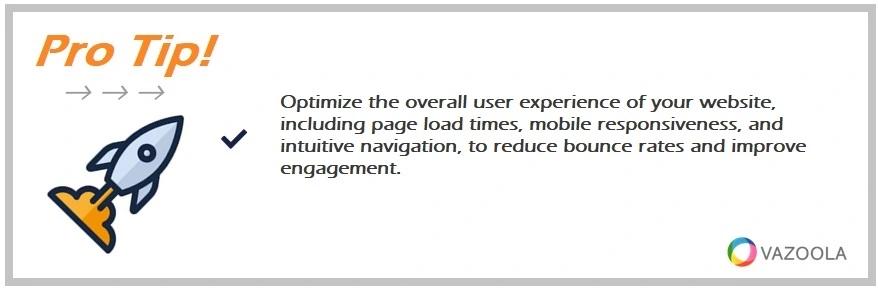
Optimize the overall user experience of your website, including page load times, mobile responsiveness, and intuitive navigation, to reduce bounce rates and improve engagement.
Tips for Effective Thin Content SEO Enhancement
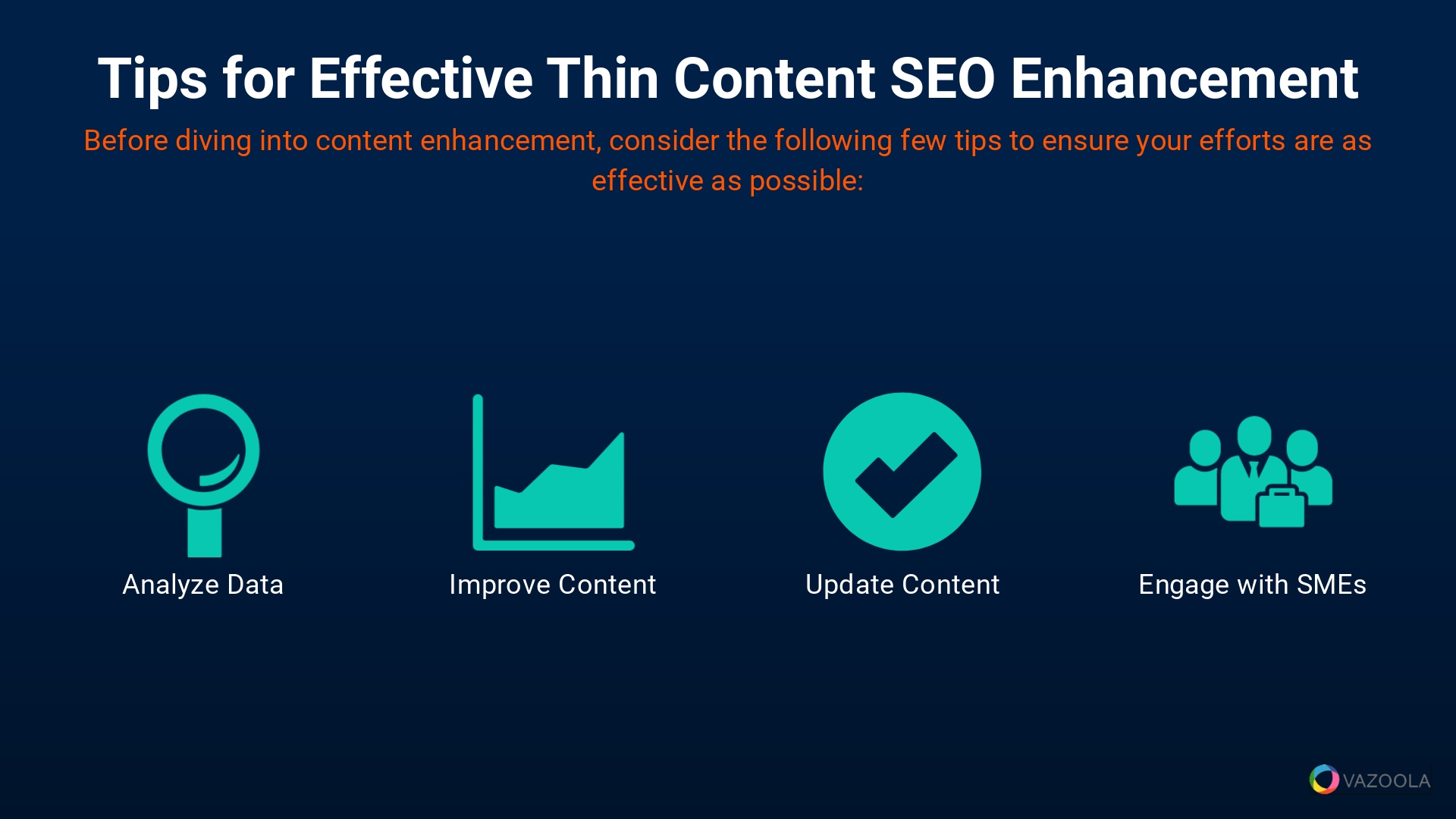
Before diving into content enhancement, consider the following few tips to ensure your efforts are as effective as possible:
-
Analyze Data: Employ data and analytics to pinpoint what pieces of content need the most improvement.
-
Improve Content: Enhance user experience by improving content readability and structure, making sure it's accessible and engaging.
-
Update Content: Regular updates to content keep it relevant and engaging, helping maintain user interest over time.
-
Engage with SMEs: Engage with subject matter experts to add credibility and depth, which can transform an ordinary article into a standout piece.
Pro Tips:
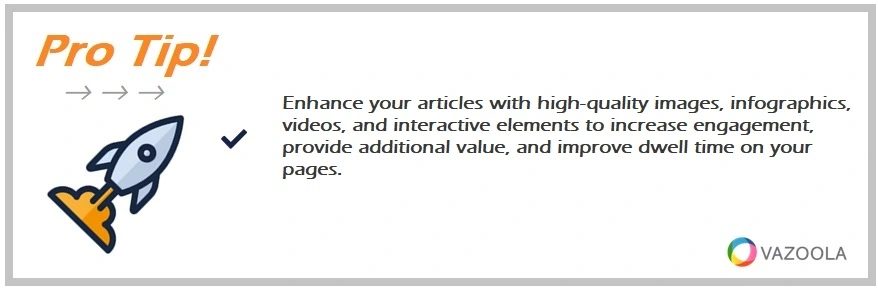
Enhance your articles with high-quality images, infographics, videos, and interactive elements to increase engagement, provide additional value, and improve dwell time on your pages.
Bottom Line: Dos and Don'ts for Managing Thin Content
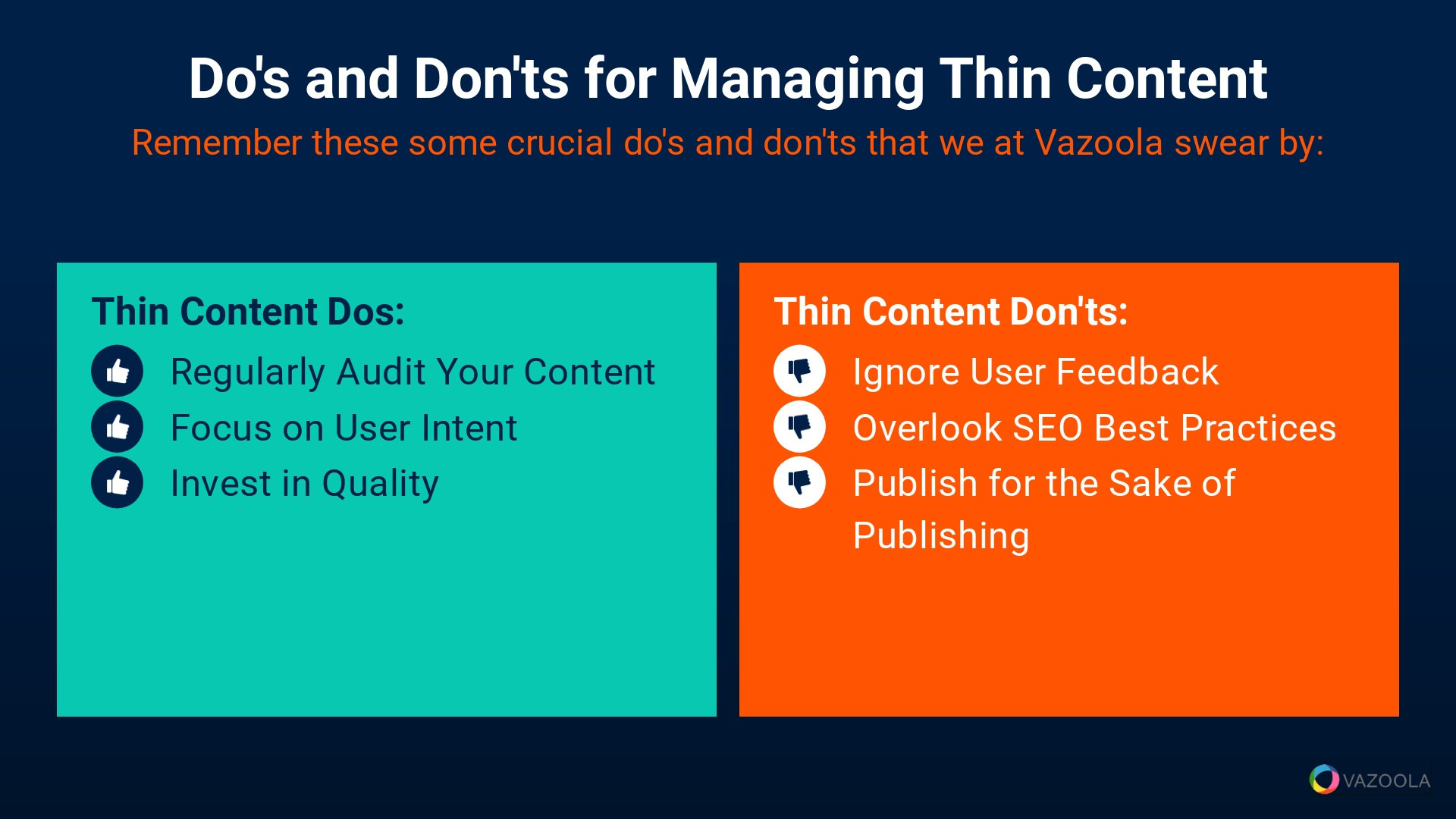
To wrap up our guide on managing thin content, here are some crucial do's and don'ts that we at Vazoola swear by:
Do:
-
Regularly Audit Your Content: Conduct consistent audits to keep track of your content's quality and relevance.
-
Focus on User Intent: Ensure every piece of content aligns with your audience’s needs and questions, and it serves a clear purpose.
-
Invest in Quality: Opt for fewer, higher-quality pages instead of a larger quantity of low-quality pages. Even when fewer in number, higher-quality pages drive better engagement and SEO results.
Don't:
-
Ignore User Feedback: User engagement metrics and feedback are vital indicators of content quality and should not be overlooked.
-
Overlook SEO Best Practices: While enhancing content depth, don’t neglect technical SEO aspects, including (but not limited to) meta tags and proper header usage.
-
Publish for the Sake of Publishing: Avoid publishing content solely to increase the number of pages on your site. Instead, make sure every piece of content provides real value, and each is well-optimized.
Following our guidelines can help you effectively manage and improve thin content, while ensuring your website stays competitive and meets SEO standards and provides genuine value to your users.
Pro Tips:
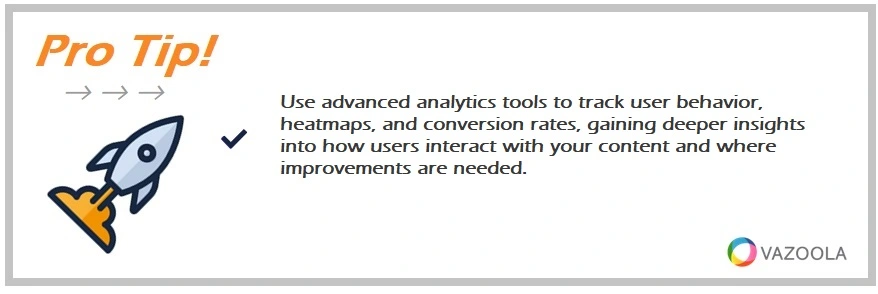
Use advanced analytics tools to track user behavior, heatmaps, and conversion rates, gaining deeper insights into how users interact with your content and where improvements are needed.

